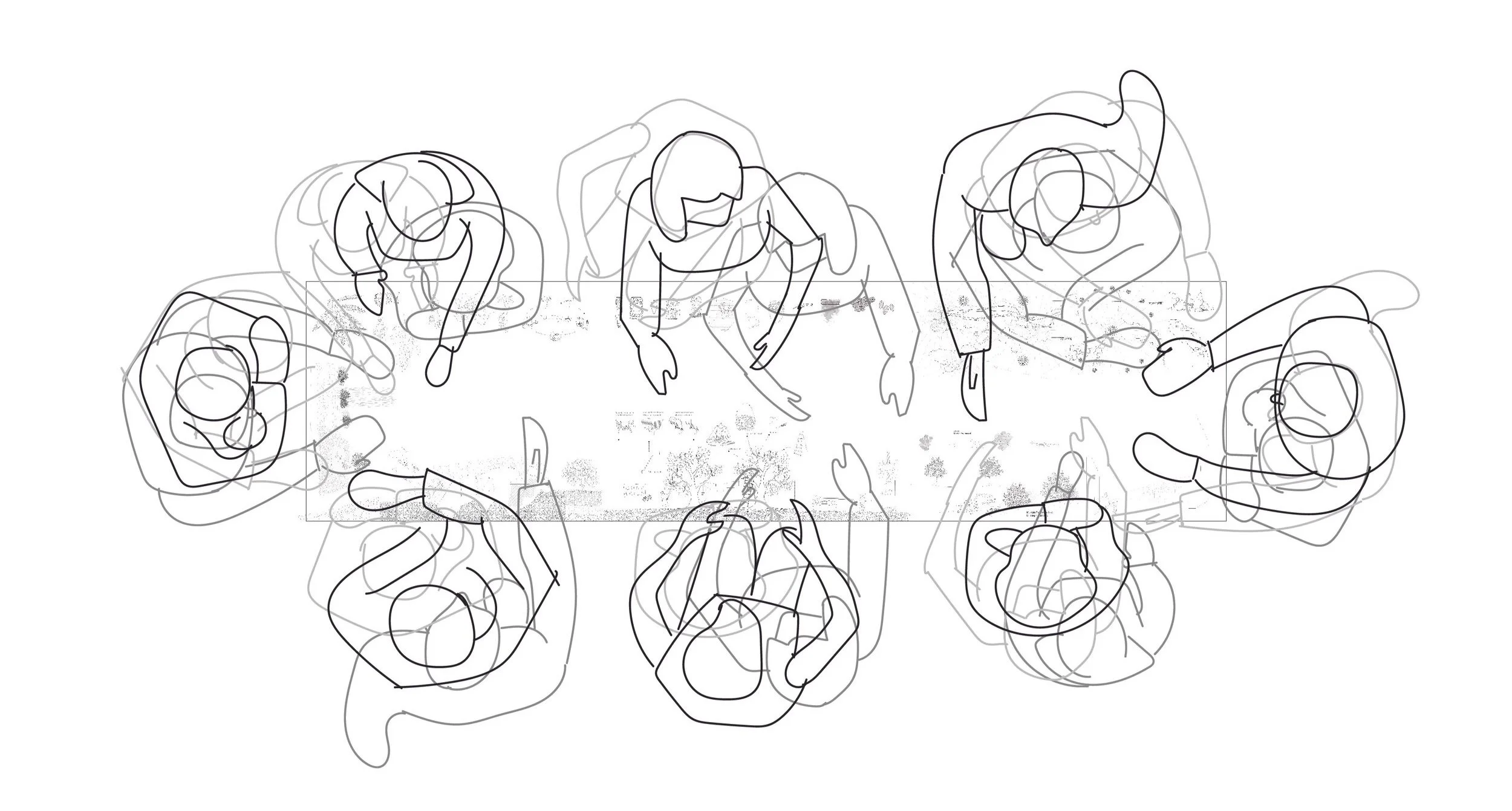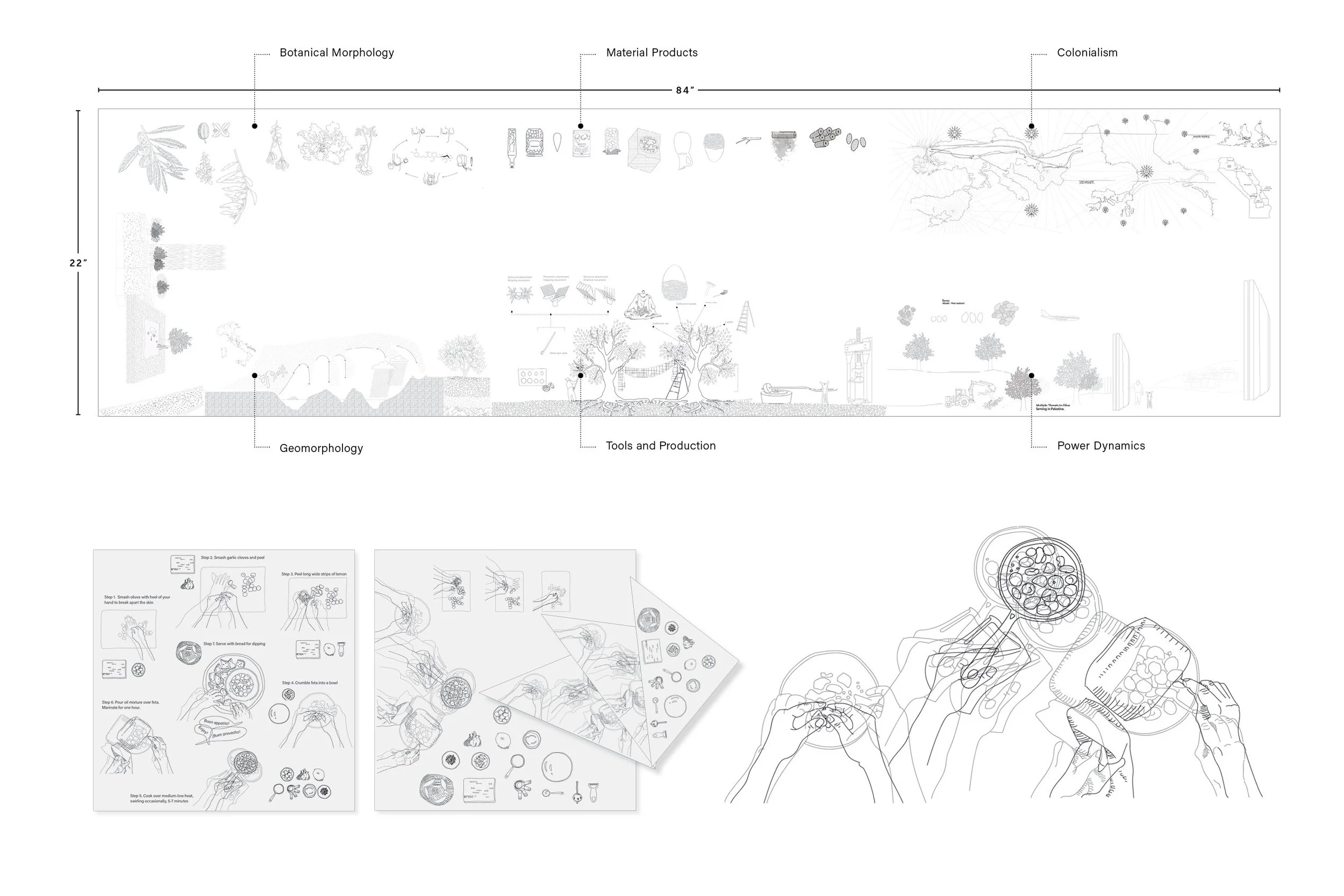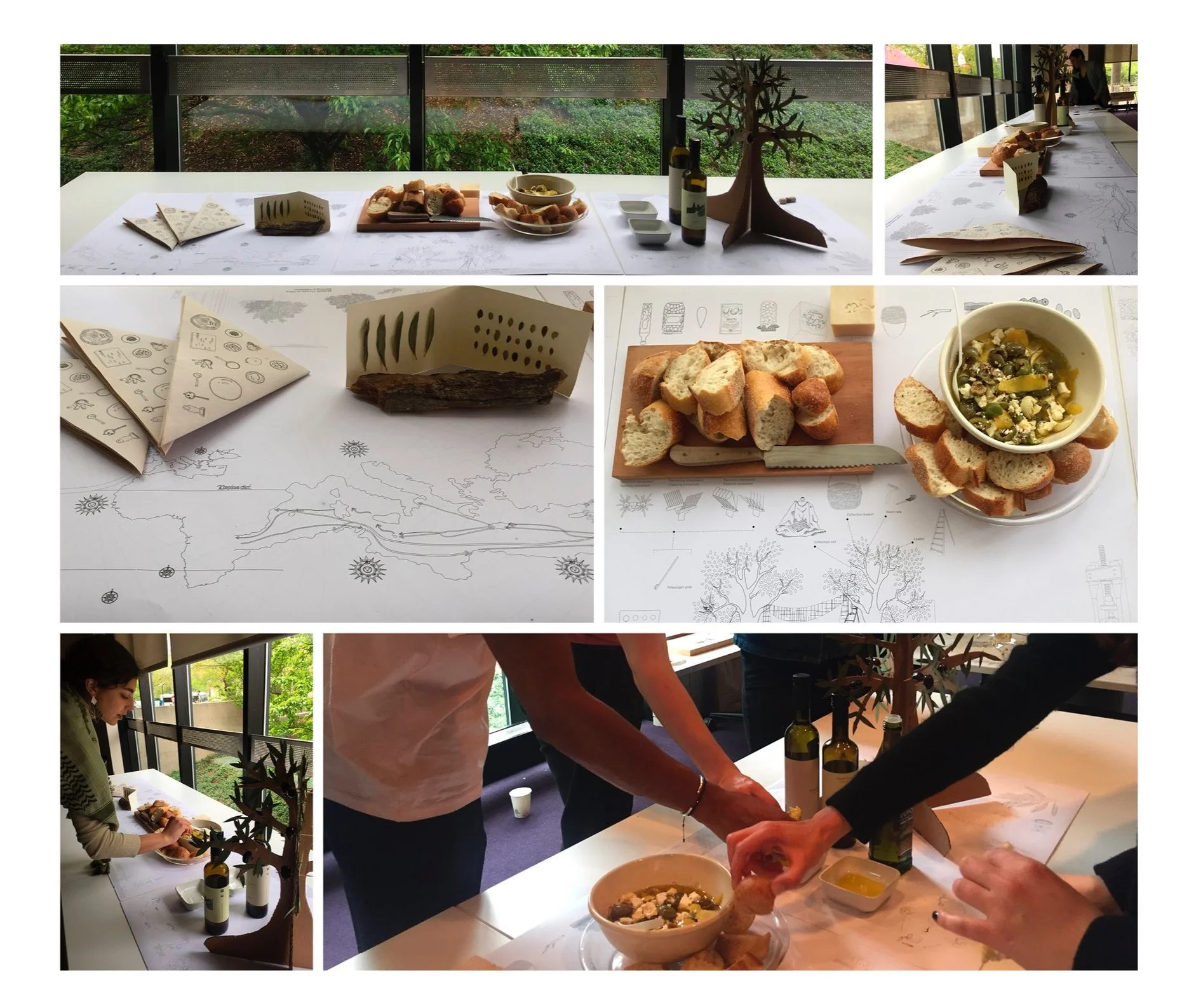The Landscape We Eat
How can we uncover and understand the geopolitical origins of our food?
This project explores the relationship between the food we consume and the landscapes from which they originated. Drawing is used as a method to unpack food systems and their inextricable geomorphology, climate, infrastructure, and cultural productions.
The research focused on the cultivated olive tree, Olea europaea, and culminated in a gathering where the final drawings were presented over a shared meal. Collected over a common surface, the table setting renders clear for the meal participants the larger systems that figuratively and literally put the meal on the table. Through making visible the invisible, the experience encourages us to consider the link between the recipes we follow, the food we consume, and the and the geography we inhabit. The links that bind these together create the landscapes that we eat.
Details
“The Landscape We Eat” Seminar (Spring 2019)
Instructor: Montserrat Bonvehi Rosich
Setting the Table
Above: The tablecloth was designed for a seven-foot long surface and organized around thematic conversations.
Below: The napkin highlights the process that created the meal using the ingredients of study: the olives and oil of Olea europaea
The Full Spread
Top row: The tablecloth, napkins, meal, and artifacts centered around the olive tree
The Centerpieces
Middle row: The centerpieces were placed in line with the themes on the tablecloth (left). Marinated olives and feta cheese were served, paired with olive oil (right).
The Meal
Bottom row: Preparing the spread (left) and guests gathering around the table to discuss the landscape we eat (right).


